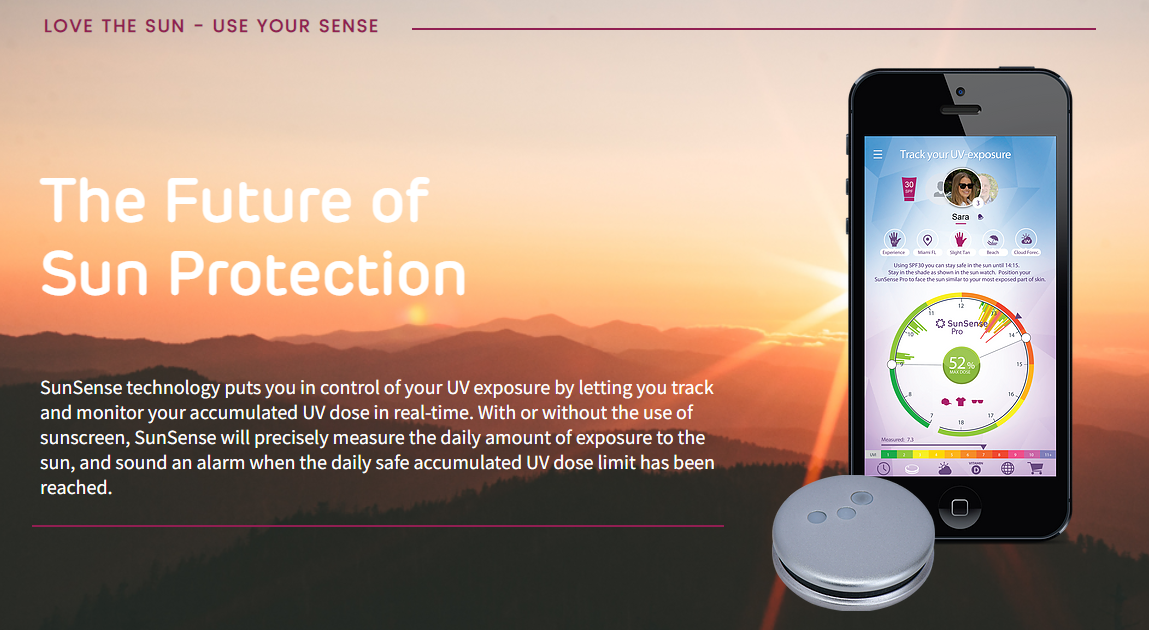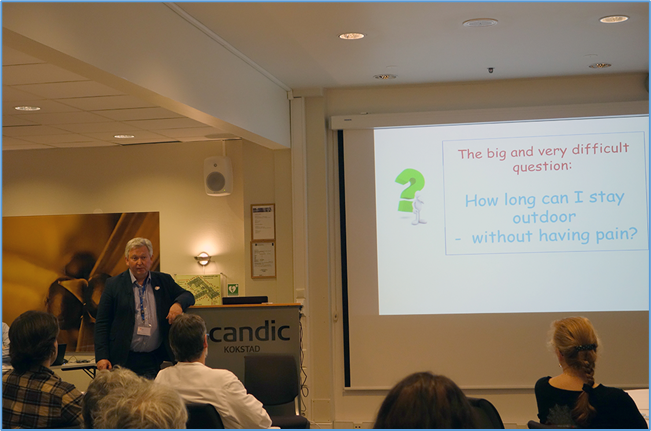Objectives of the service

Diseases associated with human skin are among the most common forms of disease in the world. A significant number of these conditions are affected by sun exposure, some in a positive way, others very negatively when certain limits are exceeded. Careful management of the person’s individual accumulated sun exposure may therefore have a significant effect on Quality of Life.
The SunSafe platform is designed to be flexible and can be implemented for a range for skin diseases and conditions to better protect people with Erythropoietic protoporphyria (EPP) and suffering from psoriasis against overexposure and sunburn
Users and their needs
Users and their needs People with EPP and psoriasis have very different challenges with sun exposure:
EPP is a disease where reaching a cumulative dose threshold results in a 3 day attack of intense pain. Patients find it difficult to assess how close they are to the cumulative dose threshold. Because patients pay a high price for making a mistake and triggering an attack, there is an important clinical need for a warning before they pass the threshold to avoid attacks and to not overprotect (which is probably what most patients do).
Most people who have psoriasis find that the sun helps to improve their skin’s appearance. For some the change is dramatic, with red scaly patches almost disappearing altogether during summer months in a warm climate. In order to help clear psoriasis, sun exposure needs to be spread over time. A week on a sunny holiday may help, but rarely completely clears psoriasis. And if the skin is exposed too soon for too long, sunburn can result, which could cause injury to the skin. Therefore, it is important to increase exposure to the sun gradually, to allow your skin to adapt to the sun without burning.
Service/ system concept
SunSafe is a wearable device with sensors tracking ultraviolet A (UVA) and ultraviolet B (UVB) radiation plus a sensor tracking visible light. SunSafe tracks exposure to ultraviolet (UV) light and daylight in real time and the app displays accumulated dose of light during the day and gives alerts when the daily dose is getting close to the individuals threshold.
The app is used to collect individual information from the user in order to set the individual threshold for light exposure. The app is based on users responding to a questionnaire to determine skin type. Use of sun screen and level of sun protection factor is also captured in the app. Depending on skin condition, the app will be tailored to give relevant information to the user, including alerts when the daily dose of light exposure is getting close to the limit.
Data from the sensor wearable is sent to the user’s SunSafe app, and then on to the central server. Data is encrypted and anonymized, and most data sets are stored locally to comply with data protection regulations. It is the local sensor readings, together with the weather forecast data, that is the basis for both the predicted daily individual UV/sunlight maximum level recommendations, and the actual real time meaurements and accumulated dose.
This overview identifies the different stakeholders and the main differentiation between the actual end users, which are persons with different degrees of skin conditions, as well as possible corporate and medical/research partners. It also shows on a general level the various data flows and how SunSense aims to create a business around those data flows.
Space Added Value
Several space assets can be used in a solution for correcting the measurements and improve accuracy using data relayed through the connected smartphone.
At ground level, the ratio of irradiance caused by UVB-spectrum radiation and UVA-spectrum radiation will vary a lot with solar height angle and elevation above sea level, but also with ozone layer concentrations and other atmospheric conditions like pollution, clouds, and haze. These factors can cause significant errors in the measurements, as the UVB/UVA ratio will be different from that used in calibration of the sensors.
The solar height angle can be calculated from geographic longitude, latitude, date, and time available on the smartphone via satellite navigation. Elevation above sea level can also be retrieved by a smartphone and used for calculating atmospheric impact on UV radiation as higher altitudes will allow a higher portion of UVB radiation through to the measuring device.
This forecasted UV-intensity is used together with the elevation and solar height calculated from the smartphone time and location to calculate the anticipated UVB/UVA-ratio. With this, the sensor specific algorithm corrects the sensor measurements and calculate the weighted radiation and accumulated exposure according to the relevant skin profile.
Data sources include global UV index forecasts for clear sky and clouded weather forecasts updated daily from the European Organisation for the Exploitation of Meteorological Satellites (EUMETSAT) and from the Satellite Application Facility on Ozone Monitoring (O3M SAF).
Current Status

The picture shows Dr. Atle Brun at the EPP workshop in Bergen.
Dr. Atle Brun engaged with 30 EPP patients in Norway through surveys, as well as 5 patients consulted in in-depth workshop. Partnerships were also established with Dr. Robert Sarkany, Guy’s and St. Thomas Hospital, and the International Porphyria Network. They provide access to end-users and the most up-to-date research on EPP.
For psoriasis, the use case scenarios more resemble those of regular mass market end customers. Through our cooperation with the Norwegian Psoriasis and Eczema Association (NPEA), we had a focus group of 8 psoriasis patients giving input on the product and service. The result was a new project and partnership with NPEA for a larger user testing experiment during the summer 2020 with 31 participants.
We aim to industrialize SunSafe my May 2021, and be ready to serve psoriasis patients in time for summer, and in Q3-Q4 we will start to introduce the service for EPP-patients.


